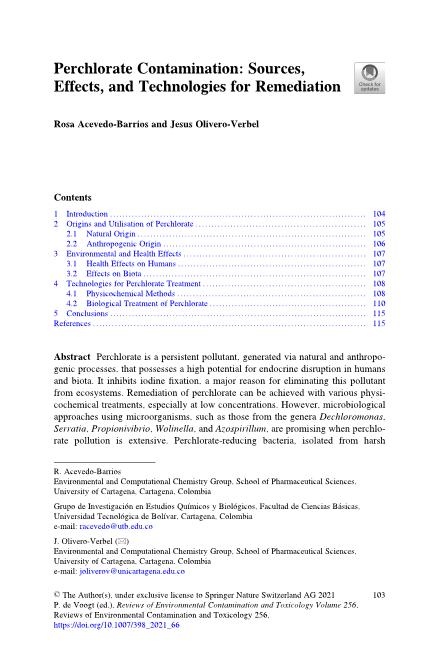Abstract
Perchlorate is a persistent pollutant, generated via natural and anthropo genic processes, that possesses a high potential for endocrine disruption in humans
and biota. It inhibits iodine fixation, a major reason for eliminating this pollutant
from ecosystems. Remediation of perchlorate can be achieved with various physi cochemical treatments, especially at low concentrations. However, microbiological
approaches using microorganisms, such as those from the genera Dechloromonas,
Serratia, Propionivibrio, Wolinella, and Azospirillum, are promising when perchlo rate pollution is extensive. Perchlorate-reducing bacteria, isolated from harsh Perchlorate is a persistent pollutant, generated via natural and anthropo genic processes, that possesses a high potential for endocrine disruption in humans
and biota. It inhibits iodine fixation, a major reason for eliminating this pollutant
from ecosystems. Remediation of perchlorate can be achieved with various physi cochemical treatments, especially at low concentrations. However, microbiological
approaches using microorganisms, such as those from the genera Dechloromonas,
Serratia, Propionivibrio, Wolinella, and Azospirillum, are promising when perchlo rate pollution is extensive. Perchlorate-reducing bacteria, isolated from harsh














